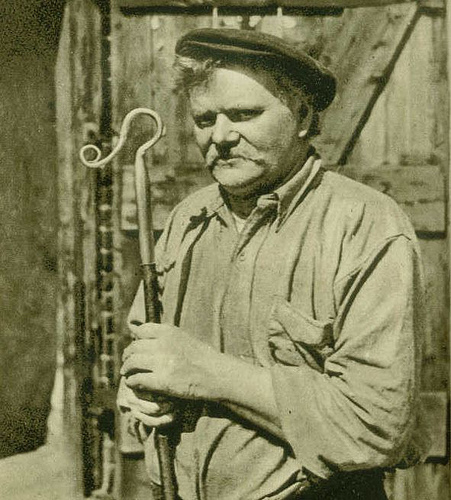
| See Aldbourne sheep shearers of 1904 |
This picture is the crookmaker of Pyecombe from H V Morton's I Saw Two Englands (1939). Morton said this was an England that had almost passed - a relic of life before the First World War. "The head of the crook is of iron or steel, and nothing makes a better crook than an old gun barrel. The haft of the crook must be formed of unpeeled hazel for the shepherds will not have ash. They polish the hazel until it looks like mahogany.
"As the purpose of a crook is to catch a sheep by the leg, and as the various breeds of sheep in England vary in size, there are many patterns. A Sussex crook would be of no use to a Kent shepherd, and a man herding Dorset Horns would require still a different pattern. . .
"Pyecombe crooks last more than a lifetime, but as there are fewer shepherds than ever on the Downs, there is not much genuine demand for them today. Instead the Mitchell brothers are generally busy making crooks for bishops and hikers." (pages 111-112)
Pyecombe is probably in Sussex.